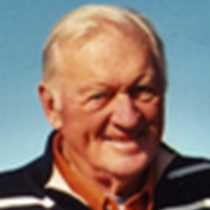Eastern Washington & Oregon
Meriwether Lewis and William Clark live!
This morning the Historian presented an overview of the Age of Enlightenment, Thomas Jefferson, and the Louisiana Purchase as backdrops to the 1803-1806 Corps of Discovery adventure. In the afternoon the Naturalist outlined the many botanical and animal species encountered, preserved and described by the Corps in their Journals. The present day setting for this historical and scientific theater occurred while aboard Sea Lion on the Columbia River.
Thomas Jefferson, Lewis’s employer and tutor, provided specific instructions regarding where and how the journey should be accomplished. His letter to Lewis included an order to seek “… the most direct and practicable water communication across this continent.” Upriver on the Missouri, across the “Stony” (Rocky) Mountains, and then westward to the Pacific Ocean, was Jefferson’s recommended route. The Corps did just what the President asked.
During the day guests also listened to Staff deck narration as the Sea Lion transited three dams: John Day and McNary. Shoreline attractions included: Miller (Native) burial islands; the ghostly site of once busy Celilo Falls; narrow Hell’s Gate; Sam Hill’s Maryhill Museum high atop a windswept Washington rise; the Blalock Islands; and the soaring walls of Wallula Gap, barrier to prehistoric waters of the Missoula or Bretz Floods. Verdant vineyards ranged across brown hillsides, fishers worked to hook late runs of migrating steelhead, and grain elevators, bridges and small agricultural communities watched the boat pass upstream.
The eastern Washington and Oregon High Desert can look bleak and empty at this time of year (September/October) – the rains will soon change that – but the rolling land holds rich soil. Wheat dominates, but sugar beets, lentils, melons, onions – including the famous Walla Walla Sweets, and corn are successfully grown and harvested. Small riverside communities supporting the local population and crops were once associated with l860s gold rushes into Oregon and Idaho hills and river beds. And the famous Nez Perce trail running from bison country (Montana) to teeming salmon waters (central Washington and Oregon) is just over the ridge from our Columbia River path.
Meriwether Lewis and William Clark live!
This morning the Historian presented an overview of the Age of Enlightenment, Thomas Jefferson, and the Louisiana Purchase as backdrops to the 1803-1806 Corps of Discovery adventure. In the afternoon the Naturalist outlined the many botanical and animal species encountered, preserved and described by the Corps in their Journals. The present day setting for this historical and scientific theater occurred while aboard Sea Lion on the Columbia River.
Thomas Jefferson, Lewis’s employer and tutor, provided specific instructions regarding where and how the journey should be accomplished. His letter to Lewis included an order to seek “… the most direct and practicable water communication across this continent.” Upriver on the Missouri, across the “Stony” (Rocky) Mountains, and then westward to the Pacific Ocean, was Jefferson’s recommended route. The Corps did just what the President asked.
During the day guests also listened to Staff deck narration as the Sea Lion transited three dams: John Day and McNary. Shoreline attractions included: Miller (Native) burial islands; the ghostly site of once busy Celilo Falls; narrow Hell’s Gate; Sam Hill’s Maryhill Museum high atop a windswept Washington rise; the Blalock Islands; and the soaring walls of Wallula Gap, barrier to prehistoric waters of the Missoula or Bretz Floods. Verdant vineyards ranged across brown hillsides, fishers worked to hook late runs of migrating steelhead, and grain elevators, bridges and small agricultural communities watched the boat pass upstream.
The eastern Washington and Oregon High Desert can look bleak and empty at this time of year (September/October) – the rains will soon change that – but the rolling land holds rich soil. Wheat dominates, but sugar beets, lentils, melons, onions – including the famous Walla Walla Sweets, and corn are successfully grown and harvested. Small riverside communities supporting the local population and crops were once associated with l860s gold rushes into Oregon and Idaho hills and river beds. And the famous Nez Perce trail running from bison country (Montana) to teeming salmon waters (central Washington and Oregon) is just over the ridge from our Columbia River path.



